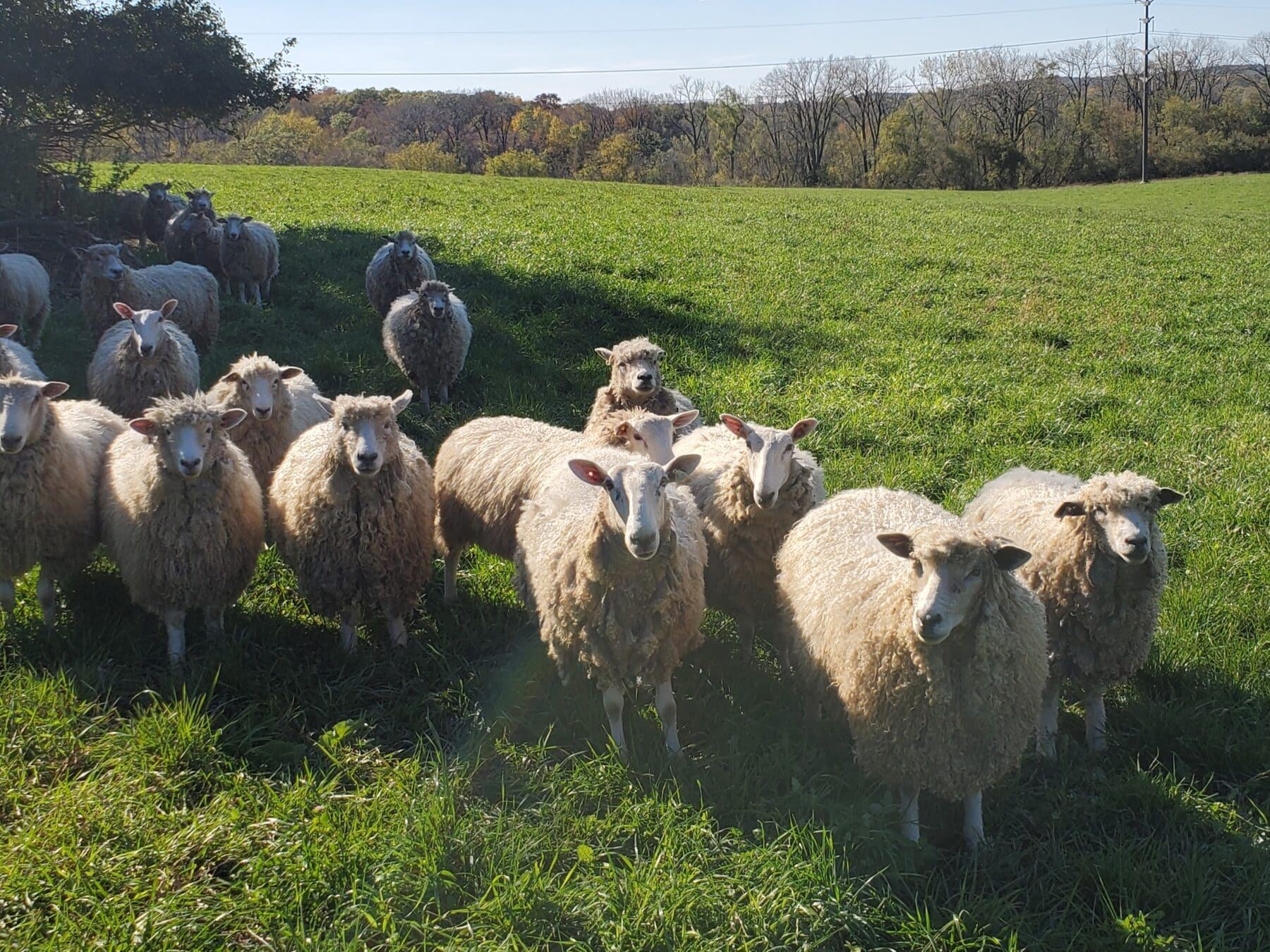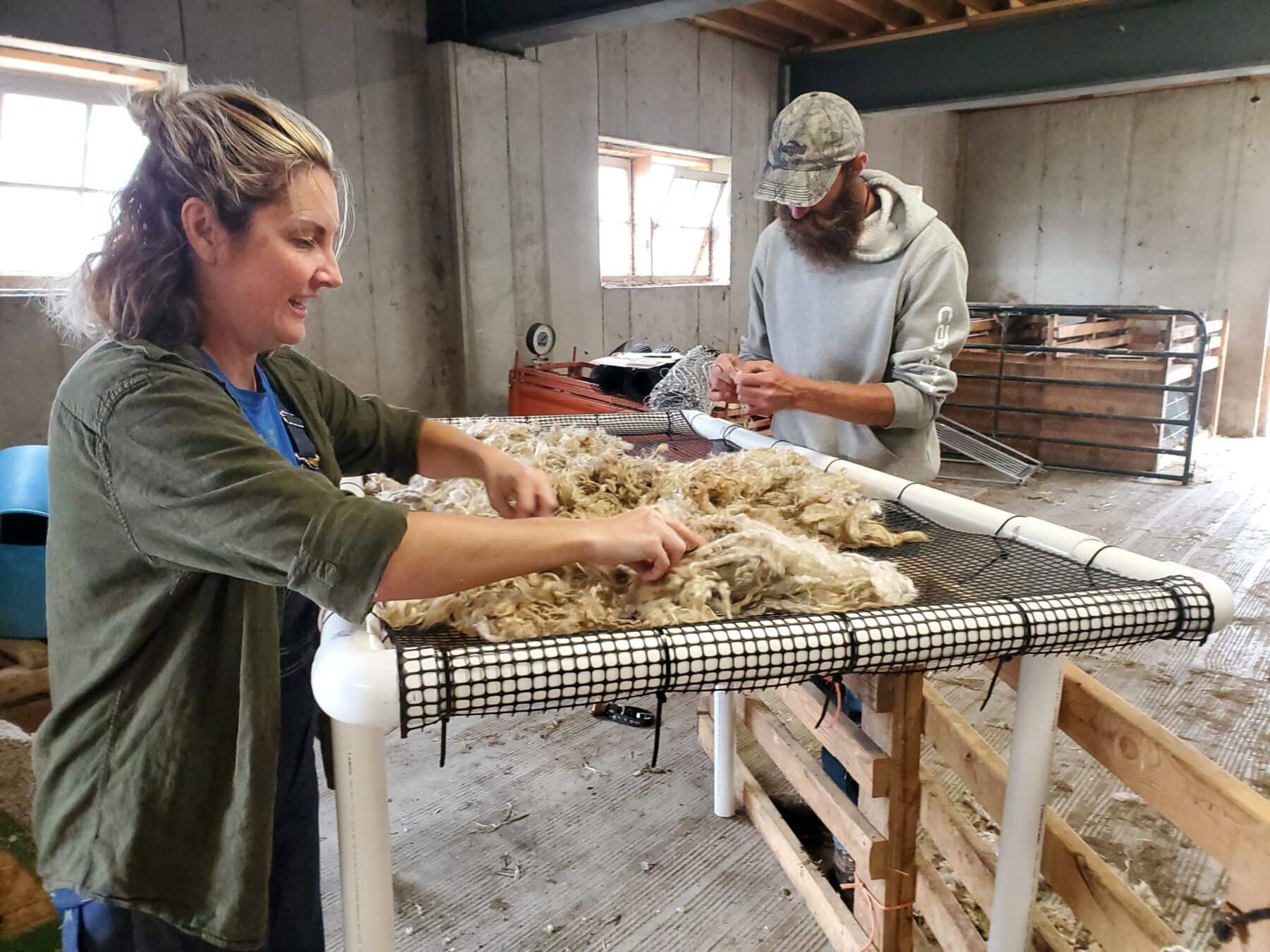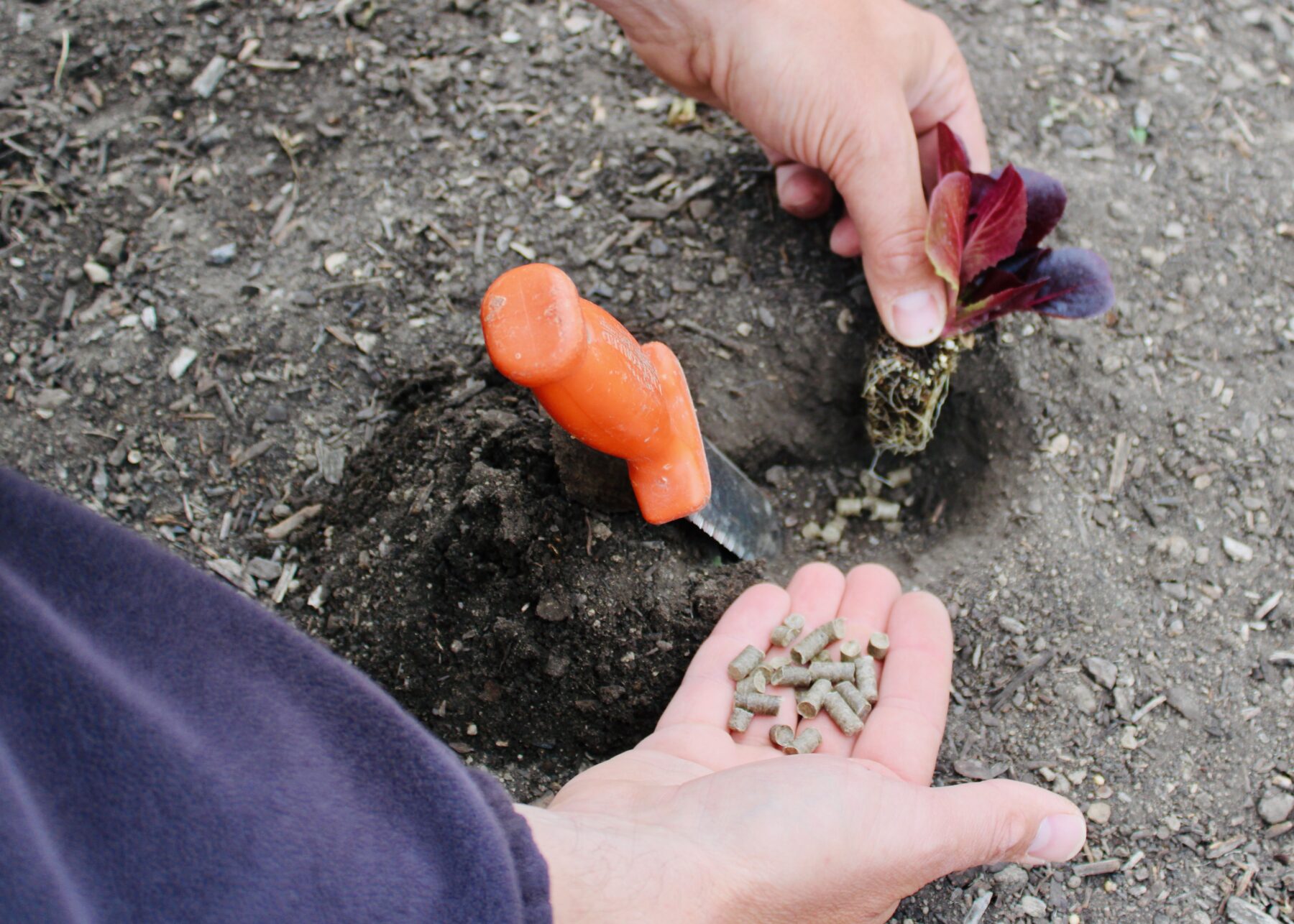
By Liz Lyon
Sheep’s wool must be shorn at least once per year no matter whether sheep are being raised for meat or for fiber. An annual shearing helps keep sheep cool during the summer, allows them to have more success with nursing during lambing season, and also protects them from parasites in the field. After shearing, many shepherds end up either selling their wool for an incredibly low price or stashing it away on the farm where it won’t be used at all. This happens because the expense and trouble to transport and sell the wool does not make financial sense for many farmers. While some shepherds are also fiber enthusiasts, not all of them have the time and skill necessary to clean and process raw wool into products that can be used for garments and fiber arts.
Here at Gwenyn Hill, we are lucky to have several fiber artists and enthusiasts in our local network. On shearing day, they show up to help us skirt (i.e. sort and complete initial cleaning of) our wool.
Some return home with a freshly shorn and skirted fleece to work with. Any nicely skirted, long-locked wool left after that is sent to local fiber mills– including Round Barn Fiber Mill in Durand, Illinois and Ewetopia in La Farge, Wisconsin– to be turned into roving or yarn. After a few months, the yarn returns to Gwenyn Hill and we are able to sell it to knitters, crocheters, weavers, and other fiber artists close to the farm.
Even at Gwenyn Hill, where we have these wonderful local outlets for our wool, some wool still has the potential to become waste.

Belly wool is the most commonly discarded wool on shearing day, as it is too dirty or too short to be turned into roving and/or yarn. It seems a shame to discard something that not only took so long for the sheep to grow, but also can continue providing benefits for other living things. Wool contains keratin, which will break down to release nitrogen over time as the wool decomposes. Wool also has impressive water retention abilities. These two qualities make wool a perfect addition to any vegetable garden or houseplant pot to help keep plants happy with the water and nutrients they need. Applying raw wool directly to the garden has a few drawbacks, though: it takes years to break down and is challenging to apply and keep in place.

The team at Woollets, in Argyle, Wisconsin has a solution. They are helping sheep farmers in Wisconsin and beyond turn their waste wool into 100% wool fertilizer pellets using only heat and pressure. This outlet allows farmers to get a fair price for their wool, and also allows gardeners the opportunity to use a locally-produced slow-release nitrogen fertilizer containing only one ingredient: wool!
We’re excited to stock Woollets, made from our ewes’ 2023 shearing, at the Farmstand at Gwenyn Hill alongside our garden transplants and beautiful yarn.
Liz Lyon is the Vegetable Production Manager at Gwenyn Hill Farm. She loves learning about and participating in projects that use local resources and talents to rethink and reduce waste.
